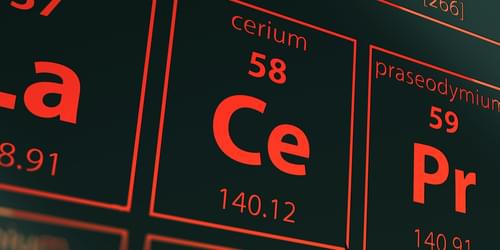Astrophysicists have a cerium problem—models predict that certain stars should contain much less of this heavy element than astrophysical observations find. Recently performed experiments at CERN’s neutron time-of-flight (n_TOF) facility have widened the gap between theory and observations by 20% [1]. The researchers behind the work say that the results highlight the need for high-accuracy measurements of the nuclear properties of atoms, as well as for updated nucleosynthesis models of element formation. “Our experiment made the problem worse,” says Simone Amaducci of the INFN Laboratori Nationali del Sud, Italy. “That was unexpected, but it’s also interesting because it means there is something we don’t understand about how nucleosynthesis happens.”
Most of the Universe’s heavier elements form in stars via one of the so-called neutron-capture processes, in which an atomic nucleus absorbs one or more neutrons. In the slow neutron-capture process, or “s process,” the absorptions are spread out in time. As such, each absorption event results in either a stable nucleus with the same number of protons but one additional neutron or an unstable nucleus, which then radioactively decays to produce the nucleus of the next element in the periodic table—the one with one additional proton.
Using currently available models of the s process, researchers have correctly predicted the abundances of elements as heavy as barium (56 protons), lanthanum (57 protons), praseodymium (59 protons), and neodymium (60 protons) in stars that are known to be enriched via the s process. But the models appear to break down for cerium (58 protons), as the abundance predictions for this element in some low-mass, low-metallicity globular cluster stars have disagreed by up to 30% with observations. “This discrepancy is very strange, as the theory works for the neighboring elements,” says Sergio Cristallo, a team member who works on problems related to neutron capture at the National Institute of Astrophysics in Italy. “There is nothing in the models that should cause such a discrepancy just for one element.”
